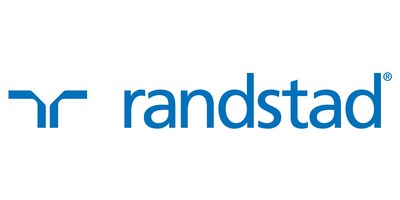Randstad's workmonitor 2021 first edition finds more job optimism and role for business in vaccination rollout
A recent survey by Randstad reveals that the global workforce is optimistic about returning to work and increasing job opportunities in 2021. Key findings include:
- 78% of workers prefer returning to the workplace.
- 75% are willing to get vaccinated if required.
- 54% anticipate more job opportunities this year.
- 52% are motivated to stay with their current employer.
However, many workers feel that workplaces need to improve safety through vaccination, with 53% stating they won't feel safe until others are vaccinated.
- 78% of workers want to return to the workplace.
- 75% are willing to get vaccinated for their jobs.
- 54% expect more job opportunities in 2021.
- 52% feel motivated to stay with their employer.
- 53% of workers feel unsafe until others are vaccinated.
- Women are less hopeful about job opportunities post-pandemic.
Insights
Analyzing...
AMSTERDAM, April 7, 2021 /PRNewswire/ -- A global workforce — fatigued by restrictions and safety concerns — is emerging in 2021 with a more optimistic and hopeful outlook for the year ahead, our latest Workmonitor research has revealed. Conducted in the first quarter of 2021, this semi-annual survey of more than 27,000 workers in 34 markets showed that workers around the world are ready to go back to their workplace and more than willing to receive the vaccine if required by their employer.
There is also a new optimism that additional job opportunities will emerge later in the year, contrasting with results from last year in which negative sentiments weighed heavily on most respondents around the world. Key findings include:
78% want to go back to the workplace at least partially if not full-time.75% would be willing to get vaccinated if it's required for their job.54% think they will have more job opportunities this year.52% say their experience with work during the pandemic has motivated them to stay with their employer for the long term.
a role for business in vaccination rollout
For organizations to return to a pre-pandemic state, most survey respondents believe their work environments need to also be much safer than they are now and an increase in vaccination rollout is seen by many as essential.
In fact,
Our survey revealed that just a quarter of workers are required by their employer to be vaccinated, with the highest percentage located in Asia and the lowest in Southern Europe. However, an overwhelming majority (
strong desire to return to the workplace
Until a return to work is possible, feelings of isolation, the inability to strike a healthy work-life balance and the longing for personal connections are concerns cited by a majority of workers. Indeed,
These challenges have created a strong desire to return to the office (
Anticipating what workers will need over the next months, pivoting with public health guidelines and planning for more reopenings will require employers to adapt quickly to ensure workers feel supported through the transition. The most useful action cited by over a quarter of respondents (
optimism for the future
The data reveals that after a year of restrictions and lockdowns, the global workforce has grown accustomed to these conditions, and they are more hopeful about the months ahead. A majority (
confident more job opportunities will be available later this year | |||
Americas | |||
APAC | |||
Eastern Europe | |||
Northwestern Europe | |||
Southern Europe | |||
All regions | |||
Although optimistic about future job opportunities,
"To help employers instill greater confidence around wellness and safety, C-suite and human capital leaders need to map what a post-pandemic work environment looks like — whether that means hybrid schedules to maintain distancing in the office, incentive programs to encourage widespread vaccination or more employee assistance programs offering a variety of support mechanisms. Even when most of the global workforce is inoculated, it will take time for the workforce to acclimate to so much change ahead."
—Marc-Etienne Julien, CEO, Randstad Canada & Managing Director, Global Talent
You can read more detailed insights in the full report which can be downloaded from: https://www.randstad.com/workforce-insights/global-hr-research/randstad-workmonitor/
about the randstad workmonitor
The Randstad Workmonitor was launched in 2003 and now covers 34 markets around the world. The study encompasses Europe, Asia Pacific and the Americas. The Randstad Workmonitor is published twice a year.
In addition to the rotating set of themed questions, the survey also addresses job satisfaction, captures the likelihood of an employee changing jobs within the next six months, and provides a comprehensive understanding of sentiments and trends in the job market.
The study is conducted online among employees aged 18 to 65, working a minimum of 24 hours a week in a paid job (not self-employed). Minimum sample size is 800 interviews per market. The Dynata panel is used for sampling purposes.
The first full survey of 2021 was conducted in 34 markets from February 15 to March 8, 2021.
about randstad
Randstad is the global leader in the HR services industry. We support people and organizations in realizing their true potential by combining the power of today's technology with our passion for people. We call it Human Forward. In 2020, we helped nearly two million candidates find a meaningful job with more than 236,000 clients. Furthermore, we trained close to 350,000 people. Randstad is active in 38 markets around the world and has a top-three position in almost half of these. In 2020, Randstad had on average 34,680 corporate employees and generated revenue of
![]() View original content to download multimedia:http://www.prnewswire.com/news-releases/randstads-workmonitor-2021-first-edition-finds-more-job-optimism-and-role-for-business-in-vaccination-rollout-301263779.html
View original content to download multimedia:http://www.prnewswire.com/news-releases/randstads-workmonitor-2021-first-edition-finds-more-job-optimism-and-role-for-business-in-vaccination-rollout-301263779.html
SOURCE Randstad








